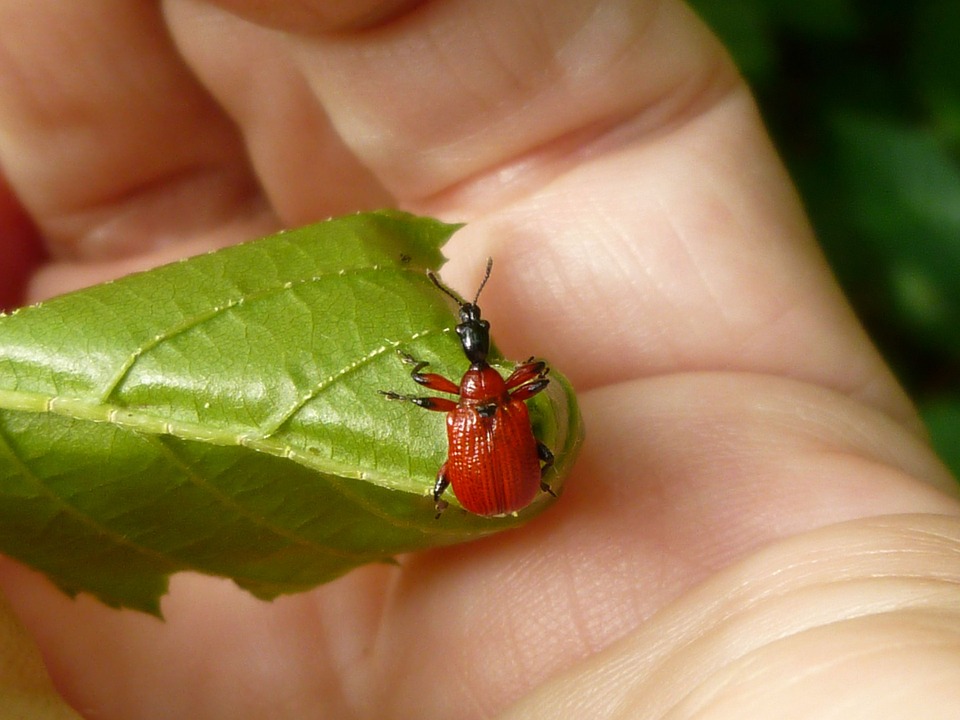The best plants and insects as a food source

One of the most crucial survival skills that everyone should know, is being able to find food that is safe to eat. While you can live for three weeks without food, the effects of going without it will come in only one day. First comes a headache, followed by energy loss, which will make your survival a lot difficult.
That’s why it’s critical to be able to find safe food in the wilderness. In the following article, you will learn which plants and insects to avoid, and which ones you should look for in the wilderness.
Plants to avoid

The old saying “It’s better to be safe than sorry” applies well to every survival situation. If you can’t identify a certain plant, you should stay away from it at any cost.
Here are few criteria for plants you should avoid:
- Plants with thorns, hairs, and spines
- Bitter plants
- Plants with seeds inside pods
- Milky or colored sap
- Three-leaved pattern plants
- Plants that have purple, pink, or black spurs

The signs above suggest that the pants are probably poisonous, and you should definitely avoid them. Even in desperate times, you cannot allow yourself to eat a poisonous plant. It’s better not to eat at all than to eat a toxic plant.
Insects to avoid

Insects can be a very viable source of food since they provide a lot of fats and proteins that plants don’t. Unfortunately, like some plants, there are few things you need to keep in mind when looking for an insect as a food source.
Make sure you avoid insects with the following criteria:
- Strong odor insects
- Insects with a visible stinger
- Brightly colored insects (yellow, orange, or red)
Plants you can consume
Cattail

This plant can be found near freshwater, and they’ve been used for years by many Native Americans tribes. Before consuming the leaves of the cattail, you have to boil them. The stem and the rootstock can be eaten raw, all you need to do is wipe off the mud.
Clover

Clovers are usually found in open grassy areas. You can easily identify them, and eat them raw or boiled.
Asparagus

Don’t let the wild asparagus fool you. Although the one found in nature it’s thinner than the one in the stores, it can be even more nutritious. It’s better to boil it before consuming, but eating it raw won’t harm you.
Fireweed

Noted for its purple flowers and circular veins on the leaves, fireweed is also known for its richness in vitamin C and vitamin A. Like cattails, it was used by many Native American tribes in their diet, serving as a staple. It’s the best to eat the fireweed when it’s still young since mature fireweeds taste bitter.
Dandelion

You can see this plant everywhere around you, and you probably find it annoying. But, it can be a lifesaver in a survival situation. The best thing about dandelion is that every part of it is edible.
Wood Sorrel

Apart from being edible when it’s boiled, this plant also has some medicinal properties. It’s used to treat mouth sores, and it was used by many Native American tribes.
Kelp

Rich in vitamin K, this plant can be found almost everywhere in the world. The best thing about kelp is that it can be eaten raw.
Insects good for consuming
Caterpillars

Although they don’t look edible, there are few types of caterpillars that can replace a good meal. Make sure you avoid the ones with bright colors, and you’ll be safe and full of proteins and energy. Caterpillars are packed with protein, vitamin B, iron, and fat.
Ants

Even though they are edible, when eaten alive they can bite and hurt your mouth. Prevent this by cooking them over a fire, which will also eliminate the bitter taste. Make sure you also remove any soil from them, especially if you find them in an anthill.
Grasshoppers

These crunchy insects are a great source of calcium and protein. They taste excellent when cooked over a fire, but you can eat them raw as well. In everyday life, grasshoppers can be annoying, and even be seen as a major pest. But, in a survival situation, they can be a real lifesaver.
Termites

If you ever see a decaying tree stump of a log, make sure you survey it for termites. They are packed with proteins, more than any insects on this list. One hand of termites can give you the boost for a whole day. The best time to look for termites is in the rain or after a rainstorm since they prefer damp wood.
If you have any comments, please drop us a message on our Outdoor Revival Facebook page.
If you have a good story to tell or blog, let us know about it on our FB page. We’re also happy for article or review submissions; we’d love to hear from you.
We live in a beautiful world, get out there and enjoy it. Outdoor Revival – Reconnecting us all with the outdoors.
